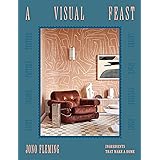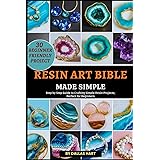Mastering Artisanal Fabrication: The Art of DIY Pipe Cleaner Flowers
In the realm of artisanal crafting, the creation of pipe cleaner flowers represents a fascinating intersection of simplicity and sophisticated design. This medium, often perceived as a basic craft material, is capable of yielding botanical forms of remarkable elegance. The accompanying video above provides visual guidance on initiating such projects. This comprehensive discourse further explores the methodologies and design principles inherent in crafting exquisite handmade pipe cleaner flowers.
Historically, crafting has been a fundamental human endeavor. It promotes skill development and fosters creative expression. The utilization of readily available materials is frequently observed in various traditions. Pipe cleaner flowers exemplify this principle effectively. They offer an accessible entry point into three-dimensional art. This method democratizes floral artistry for enthusiasts of all skill levels.
Strategic Material Selection for Optimal Floral Design
The foundation of any successful crafting project lies in material selection. For DIY pipe cleaner flowers, this aspect is critical. Various types of pipe cleaners are available. Each possesses distinct attributes for structural integrity and aesthetic appeal. Standard chenille stems are widely recognized. They provide excellent pliability and textural qualities.
Furthermore, metallic or glitter pipe cleaners can introduce specific visual effects. Their reflective properties are often leveraged for dramatic accents. Gauge selection is another important consideration. Thicker gauges offer increased rigidity for stems. Finer gauges are preferred for delicate petal formations. Material consistency directly impacts the final sculptural fidelity of the flower.
Essential Tools and Ergonomic Considerations
While minimal tooling is a hallmark of pipe cleaner crafting, certain implements enhance precision. Small, sharp scissors are indispensable for clean cuts. Pliers, specifically needle-nose variants, are often employed. They aid in bending and shaping with increased accuracy. Their use facilitates complex structural adjustments.
Ergonomic considerations also play a role in extended crafting sessions. Proper lighting is essential for visual clarity. A stable work surface prevents material slippage. These subtle environmental factors contribute to crafting efficiency. They also minimize potential strain during intricate manipulations. Such details are not to be overlooked by the serious artisan.
Advanced Techniques in Pipe Cleaner Flower Construction
The construction of compelling craft pipe cleaner flowers involves several core techniques. Each technique contributes significantly to the final botanical representation. Winding methods are foundational for stem creation. A central wire, sometimes augmented, provides necessary support. Pipe cleaners are tightly coiled around this core structure.
Petal formation often employs folding and twisting. Individual pipe cleaners are shaped into desired petal contours. These are then secured through intricate interweaving or additional wire. Calibrating tension during shaping is paramount. This ensures the petals retain their form. Structural integrity is maintained throughout the design.
Achieving Realistic Petal and Leaf Morphology
Replicating natural botanical morphology requires keen observation. Different flower species exhibit unique petal shapes and arrangements. For roses, multiple layers of curved petals are progressively added. Lilies demand elongated, pointed forms. Sunflowers necessitate numerous thin, radiating elements.
Leaf construction follows similar principles of observation. Veining patterns can be suggested using finer pipe cleaner segments. The attachment of these elements is critical. Secure connections prevent premature dislodgement. This attention to detail elevates the overall realism of the making pipe cleaner flowers project. It moves beyond simple abstraction.
Chromatic Composition and Aesthetic Integration
Color theory is undeniably relevant to pipe cleaner flower design. The selection of hues profoundly impacts visual perception. Monochromatic schemes can evoke serene elegance. Complementary colors, conversely, generate dynamic contrasts. Consideration of the intended display environment is also vital.
Aesthetic integration involves more than mere color choice. It encompasses textural elements and overall visual balance. The fuzziness of chenille stems provides a unique tactile quality. This characteristic is often embraced as part of the flower’s charm. Judicious color blending creates depth. It prevents a flat, artificial appearance in the finished piece.
Applications of Handcrafted Floral Creations
The utility of handmade pipe cleaner flowers extends beyond mere artistic expression. They serve various practical and decorative purposes. These floral fabrications are excellent for personalized gifts. Their unique charm makes them memorable tokens. They convey thoughtful effort and creativity.
Furthermore, they are frequently utilized in home decor. Bouquets can adorn living spaces, offering vibrant, maintenance-free color. Event decorations, such as centerpieces or party favors, benefit from their whimsical nature. Educational settings also employ them. They are effective for teaching botany or craft skills. The versatility of DIY pipe cleaner flowers is thus considerable.







